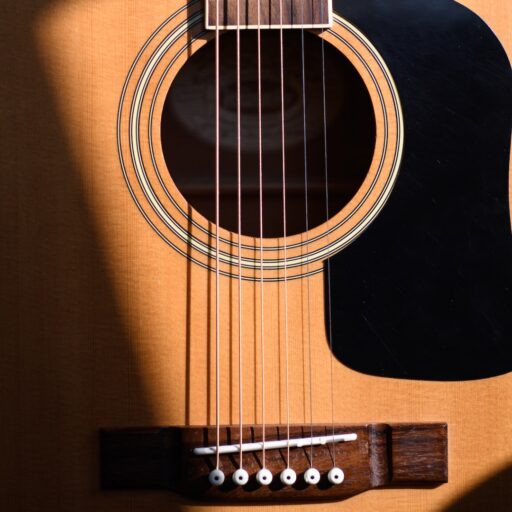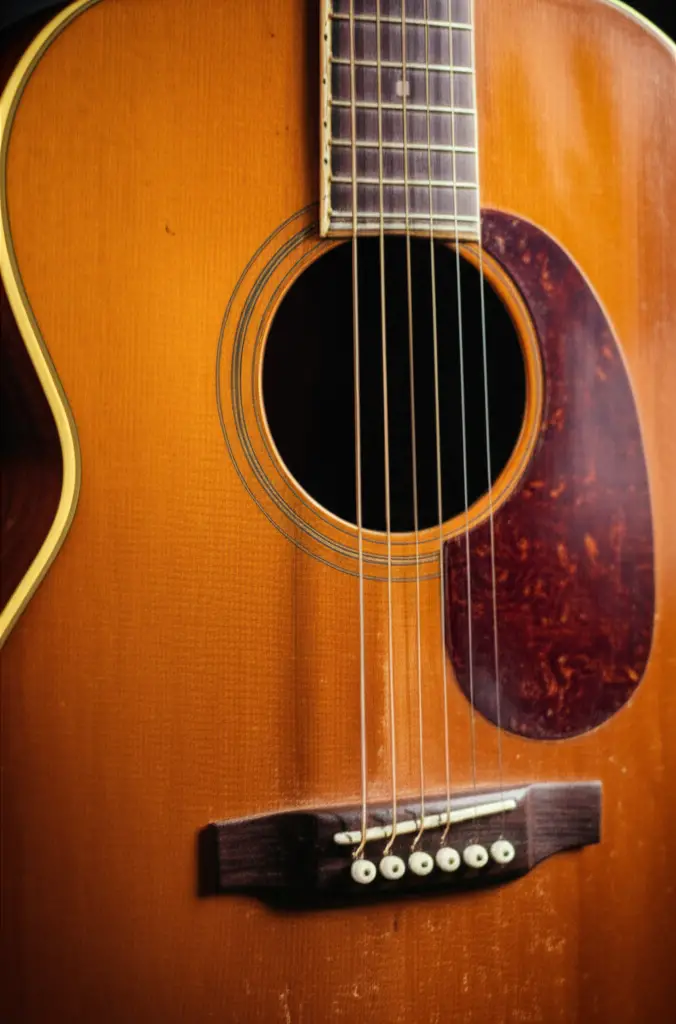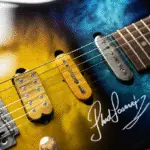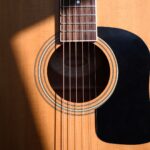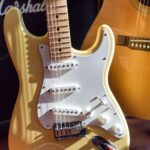Support our educational content for free when you purchase through links on our site. Learn more
What Brands Made the 80s Guitars? 🎸 Top 7 Icons Revealed (2025)

Step into the time machine with us as we unravel the most legendary guitar brands of the 1980s — the decade that revolutionized electric guitars forever. From the blazing shred machines of Ibanez and Jackson to the classic yet evolving tones of Fender and Gibson, the 80s was a playground of innovation, style, and attitude. Did you know that the rise of the “Superstrat” changed how guitars were built and played, influencing generations to come? But which brands truly ruled the era, and why do their guitars still command respect (and hefty price tags) today?
In this article, we’ll break down the top 7 brands that defined 80s guitars, explore their signature features, and share insider tips on spotting authentic vintage gems. Whether you’re a collector hunting for that perfect shredder or a player craving the iconic tones of the decade, we’ve got you covered. Plus, we’ll reveal why these guitars are more than just nostalgia—they’re timeless tools of rock ‘n’ roll magic.
Ready to discover which brands shaped the sound of the 80s and why their guitars still rock? Let’s dive in!
Key Takeaways
- The 1980s saw a guitar revolution with brands like Ibanez, Jackson, Charvel, Kramer, Fender, Gibson, and Yamaha leading the charge.
- Superstrats, locking tremolos, and high-output pickups became the defining features of 80s guitars.
- Ibanez and Jackson dominated the shred and metal scenes with fast necks and aggressive designs.
- Fender and Gibson adapted by blending classic tone with modern features, maintaining their iconic status.
- Authentic 80s guitars are prized for their unique blend of vintage charm and modern playability.
- Knowing how to spot genuine 80s models is key for collectors and players alike.
👉 Shop 80s Guitar Brands:
- Fender on Amazon | Gibson on Amazon | Ibanez on Amazon
- Jackson on Amazon | Charvel on Amazon | Kramer on Amazon
Table of Contents
- Quick Tips and Facts About 80s Guitars 🎸⚡
- The Rise of Iconic 80s Guitar Brands: A Retro Revolution
- 1. Fender in the 80s: Beyond the Strat and Tele
- 2. Gibson’s 80s Comeback: Les Pauls and Beyond
- 3. Ibanez: The Shredder’s Dream Machine
- 4. Jackson Guitars: Metal’s Favorite Axe
- 5. Charvel: The Custom Shop for 80s Rockers
- 6. Kramer Guitars: Synonymous with 80s Hair Metal
- 7. Yamaha and Other Noteworthy 80s Brands
- The Signature Features That Defined 80s Guitars 🎛️🎨
- Why 80s Guitars Still Rock Today: Vintage Appeal and Modern Influence
- How to Spot Authentic 80s Guitars: Tips for Collectors and Players
- Maintenance and Restoration: Keeping Your 80s Guitar in Top Shape 🔧🎶
- The Impact of 80s Guitar Brands on Today’s Music and Gear
- Top 80s Guitar Models to Look Out For: A Collector’s Wishlist
- Conclusion: Why 80s Guitars Are Timeless Treasures
- Recommended Links for 80s Guitar Enthusiasts
- FAQ: Your Burning Questions About 80s Guitars Answered 🔥❓
- Reference Links and Further Reading 📚
Quick Tips and Facts About 80s Guitars 🎸⚡
Welcome to the ultimate deep dive into the brands that defined 80s guitars! At Guitar Brands™, we’ve jammed on countless axes from this iconic decade, and we’re here to spill the beans on what makes these guitars legendary. Whether you’re a collector, player, or just a curious rock historian, buckle up for some juicy tidbits.
Quick Facts You Need to Know
- The 1980s birthed the “Superstrat” — a faster, flashier Strat-style guitar loaded with high-output pickups and locking tremolos.
- Brands like Ibanez, Jackson, Charvel, and Kramer exploded in popularity thanks to the shred and hair metal scenes.
- Fender and Gibson, the old guard, fought to stay relevant by updating classic models and embracing new tech.
- Japanese brands like Yamaha and ESP rose to prominence with quality craftsmanship and innovation.
- The decade saw the rise of signature models tied to guitar heroes like Eddie Van Halen, Randy Rhoads, and Steve Vai.
- Vintage 80s guitars are now highly sought after, often commanding premium prices due to their unique blend of style and tone.
Why Should You Care?
Because these guitars aren’t just relics — they’re time machines that capture the spirit of an era when rock music was bigger than life. Plus, many 80s guitars have features that modern players crave: fast necks, versatile pickups, and killer aesthetics.
If you want to know which brands ruled the 80s and why, keep reading — we’re just getting started! For a broader look at guitar brands, check out our Guitar Brands Showcase.
The Rise of Iconic 80s Guitar Brands: A Retro Revolution
The 1980s was a golden age of guitar innovation and style. As rock music diversified into metal, glam, and shred, guitar makers raced to keep up with players’ demands for speed, sustain, and stage presence. This era saw the birth of brands that are now synonymous with 80s rock and metal.
The Shift in Guitar Culture
- The 70s dissatisfaction with “corporate” guitars pushed players to seek customized, high-gain instruments.
- The 80s answered with brands focusing on shred-friendly features like thin necks, Floyd Rose tremolos, and hot pickups.
- This decade blurred the lines between American craftsmanship and Japanese innovation, creating a global guitar landscape.
Key Players in the 80s Guitar Boom
- Fender and Gibson: The veterans adapting to new trends.
- Ibanez, Jackson, Charvel, Kramer: The new kids on the block, catering to metal and shred players.
- ESP, Yamaha, B.C. Rich: Brands that carved niches with unique designs and quality builds.
This revolution wasn’t just about specs — it was about attitude and image, with guitars becoming symbols of rebellion and virtuosity. Ready to meet the stars of the show? Let’s dive into the top brands!
1. Fender in the 80s: Beyond the Strat and Tele
| Aspect | Rating (1-10) |
|---|---|
| Design | 7 |
| Functionality | 8 |
| Innovation | 6 |
| Popularity | 9 |
| Vintage Appeal | 9 |
Fender’s 80s Story: Tradition Meets Innovation
Fender, the legendary American brand, had to reinvent itself during the 80s to stay relevant. While the Stratocaster and Telecaster remained staples, Fender introduced new models and embraced Japanese manufacturing to compete on quality and price.
- Made in Japan (MIJ) Models: These became highly collectible for their craftsmanship and value.
- The Fender Elite Series: Introduced active pickups and modern features but had mixed reviews.
- Squier Brand: Fender’s budget line gained traction, especially with beginners.
Fender’s Strengths and Weaknesses in the 80s
✅ Strengths: Classic tone, iconic designs, wide player base.
❌ Weaknesses: Slow to adopt locking tremolos and high-output pickups, which limited appeal to metal players.
Personal Anecdote from Guitar Brands™
We remember a customer who swore by his 1982 MIJ Stratocaster — “It plays like butter and sounds like heaven.” That’s the magic of Fender’s 80s craftsmanship.
CHECK PRICE on Fender 80s Models:
2. Gibson’s 80s Comeback: Les Pauls and Beyond
| Aspect | Rating (1-10) |
|---|---|
| Design | 8 |
| Functionality | 7 |
| Innovation | 7 |
| Popularity | 8 |
| Vintage Appeal | 10 |
Gibson’s 80s Renaissance
After a rough patch in the 70s, Gibson made a strong comeback in the 80s, especially with the Les Paul Standard, which became a favorite of rock and metal players.
- Les Paul Standard ‘Burst’ Models: These reissues captured the vintage mojo.
- SG and Explorer Models: Continued to appeal to hard rockers and metalheads.
- Introduction of the “G-Force” Tuning System: Ahead of its time but controversial.
Pros and Cons of Gibson 80s Guitars
✅ Pros: Thick, warm tone; iconic status; excellent sustain.
❌ Cons: Heavier weight; some models lacked modern playability features.
Guitar Brands™ Insight
We’ve seen Gibson 80s guitars shine on stage and in studios — their tone is unmistakable. However, some players prefer lighter, faster necks for shredding, which Gibson didn’t always deliver in this era.
👉 Shop Gibson 80s Guitars:
3. Ibanez: The Shredder’s Dream Machine
| Aspect | Rating (1-10) |
|---|---|
| Design | 9 |
| Functionality | 9 |
| Innovation | 9 |
| Popularity | 9 |
| Vintage Appeal | 8 |
Ibanez’s Meteoric Rise in the 80s
Ibanez exploded onto the scene by delivering fast necks, sleek designs, and powerful pickups tailored for shredders like Steve Vai and Paul Gilbert.
- RG and S Series: Thin, fast necks with versatile pickups.
- Edge Tremolo System: Ibanez’s take on the Floyd Rose for dive bombs and squeals.
- Artist Signature Models: Steve Vai’s JEM series is legendary.
What Makes Ibanez Stand Out?
✅ Pros: Playability, innovation, artist endorsements.
❌ Cons: Some early 80s models had inconsistent quality control.
From Our Experience
We’ve seen Ibanez guitars inspire countless shredders — their combination of speed and tone is hard to beat. The JEM alone is a masterpiece of 80s design.
CHECK PRICE on Ibanez 80s Models:
4. Jackson Guitars: Metal’s Favorite Axe
| Aspect | Rating (1-10) |
|---|---|
| Design | 9 |
| Functionality | 9 |
| Innovation | 8 |
| Popularity | 9 |
| Vintage Appeal | 8 |
Jackson’s Sharp Edge in the 80s
Jackson Guitars became synonymous with heavy metal and speed, thanks to their aggressive body shapes and Randy Rhoads’ iconic signature model.
- Randy Rhoads Model: A V-shaped masterpiece with killer tone.
- Soloist and Dinky Models: Fast necks and high-output pickups.
- Floyd Rose Tremolos: Standard on many models for dive bombs and squeals.
Pros and Cons
✅ Pros: Metal-oriented design, playability, artist cachet.
❌ Cons: Limited appeal outside metal genres.
Guitar Brands™ Take
Jackson guitars scream 80s metal. We’ve had clients tell us their Jacksons are “the perfect balance of aggression and precision.” If you want to shred like a metal god, Jackson is a top pick.
👉 Shop Jackson 80s Guitars:
5. Charvel: The Custom Shop for 80s Rockers
| Aspect | Rating (1-10) |
|---|---|
| Design | 8 |
| Functionality | 9 |
| Innovation | 8 |
| Popularity | 8 |
| Vintage Appeal | 8 |
Charvel’s Journey from Repair Shop to Rock Icon
Charvel started as a parts and repair shop but became a go-to brand for custom Superstrats in the 80s, largely thanks to Eddie Van Halen’s endorsement.
- Super Strat Style: Sleek, fast, with hot pickups and Floyd Rose tremolos.
- Custom Shop Roots: Allowed for player-specific modifications.
- Association with Eddie Van Halen: His “Eruption” solo immortalized Charvel’s sound.
Strengths and Weaknesses
✅ Strengths: Customization, shred-friendly features, rock credibility.
❌ Weaknesses: Some models were pricey and less accessible.
Guitar Brands™ Story
We once restored a 1984 Charvel San Dimas that sounded like pure lightning — it was a joy to play and a collector’s dream.
CHECK PRICE on Charvel 80s Models:
6. Kramer Guitars: Synonymous with 80s Hair Metal
| Aspect | Rating (1-10) |
|---|---|
| Design | 8 |
| Functionality | 8 |
| Innovation | 7 |
| Popularity | 8 |
| Vintage Appeal | 7 |
Kramer’s Hair Metal Fame
Kramer was the brand of choice for many glam metal stars, including Eddie Van Halen, who helped popularize their guitars with Floyd Rose tremolos and flashy finishes.
- Floyd Rose Licensing: Kramer was one of the first to widely adopt this tremolo system.
- Distinctive Body Shapes: Pointy, aggressive, and flashy.
- Affordable Yet Quality: Made them accessible to many players.
Pros and Cons
✅ Pros: Tremolo innovation, style, affordability.
❌ Cons: Some models suffered from build inconsistencies.
From the Guitar Brands™ Vault
We’ve seen Kramer guitars bring back the 80s party vibe at gigs — they’re loud, proud, and perfect for that hair metal swagger.
👉 Shop Kramer 80s Guitars:
7. Yamaha and Other Noteworthy 80s Brands
| Brand | Design | Functionality | Innovation | Popularity | Vintage Appeal |
|---|---|---|---|---|---|
| Yamaha | 7 | 8 | 7 | 7 | 7 |
| B.C. Rich | 8 | 8 | 7 | 8 | 8 |
| ESP | 8 | 9 | 8 | 8 | 8 |
| Dean | 7 | 7 | 7 | 7 | 7 |
| Schecter | 7 | 8 | 7 | 7 | 7 |
Yamaha: The Versatile Underdog
Yamaha offered solid, reliable guitars that appealed to a broad range of players, from beginners to pros. Their Pacifica series became a favorite for its versatility and quality.
B.C. Rich and ESP: Metal’s Dark Horses
Both brands carved niches with unique body shapes and aggressive tones, favored by metal and hard rock players.
Dean and Schecter: Rising Stars
Dean’s “Z” and other models, along with Schecter’s custom shop approach, made them favorites for players seeking something different.
Guitar Brands™ Perspective
While not always the flashiest, these brands contributed significantly to the 80s guitar landscape, offering alternatives to the big names.
Explore These Brands:
The Signature Features That Defined 80s Guitars 🎛️🎨
What made 80s guitars instantly recognizable? It wasn’t just the brand name — it was the features that screamed the decade.
Key Features of 80s Guitars
- Super Strat Body Shapes: Sleek, contoured, and often with sharp edges.
- Locking Tremolo Systems: Floyd Rose and derivatives for dive bombs and pitch tricks.
- High-Output Pickups: Usually humbuckers or hot single coils for aggressive tone.
- Thin, Fast Necks: Designed for shredding and technical playing.
- Bold Finishes: Neon colors, sunbursts, metallics, and graphic designs.
- 24-Fret Necks: More range for soloing.
- Active Electronics: Some models experimented with active pickups and EQ.
Why These Features Mattered
These innovations allowed players to push the boundaries of speed, tone, and stage theatrics. The 80s guitar was a tool for expression and spectacle.
Why 80s Guitars Still Rock Today: Vintage Appeal and Modern Influence
The Timeless Allure of 80s Guitars
- Vintage Status: Guitars made before 1993 are generally considered vintage, and 80s models fit right in.
- Unique Tone and Playability: Many players swear by the fast necks and aggressive pickups.
- Cultural Iconography: These guitars evoke memories of legendary players and classic albums.
- Influence on Modern Designs: Many contemporary guitars borrow heavily from 80s aesthetics and tech.
Our Take at Guitar Brands™
We often recommend 80s guitars to players who want a blend of vintage vibe and modern playability. They’re perfect for shredders, metalheads, and anyone who loves that decade’s style.
How to Spot Authentic 80s Guitars: Tips for Collectors and Players
Step-by-Step Guide to Authenticity
- Check Serial Numbers: Most brands have databases or guides to verify production years.
- Inspect Hardware: Look for original Floyd Rose tremolos, pickups, and tuners.
- Look for Brand-Specific Markings: For example, Fender MIJ stamps or Gibson neck plates.
- Assess Wear and Patina: Genuine 80s guitars show natural aging, but beware of “relic” fakes.
- Consult Experts: Forums, vintage dealers, and trusted shops can help verify authenticity.
Common Pitfalls
- Beware of reissues and modern replicas that mimic 80s styles.
- Some brands had quality control issues, so condition varies widely.
Maintenance and Restoration: Keeping Your 80s Guitar in Top Shape 🔧🎶
Essential Maintenance Tips
- Regular Cleaning: Use appropriate guitar cleaners to preserve finishes.
- Fretboard Conditioning: Especially important for rosewood and ebony boards.
- Hardware Checks: Keep Floyd Rose systems lubricated and properly adjusted.
- Electronics Care: Clean pots and switches to avoid crackling.
Restoration Advice
- Preserve Originality: Avoid replacing original parts unless necessary.
- Professional Setup: A skilled luthier can optimize playability and tone.
- Refinish with Caution: Over-refinishing can hurt value.
The Impact of 80s Guitar Brands on Today’s Music and Gear
The 80s guitar revolution didn’t just fade away — it laid the groundwork for modern guitar culture.
- Shred and Metal Genres: Many 80s brands are still the gold standard for metal players.
- Signature Models: The concept of artist signature guitars exploded in the 80s and remains huge today.
- Technological Innovations: Locking tremolos, active pickups, and fast necks are now standard.
- Vintage Market Boom: 80s guitars are hot commodities among collectors and players alike.
Top 80s Guitar Models to Look Out For: A Collector’s Wishlist
| Brand | Model | Notable Feature | Why It’s Coveted |
|---|---|---|---|
| Fender | MIJ Stratocaster | Japanese craftsmanship | Vintage quality at affordable price |
| Gibson | Les Paul Standard 1980s | Classic burst tone | Iconic rock sound and sustain |
| Ibanez | JEM Steve Vai | Unique “monkey grip” handle | Artist signature, shred-ready |
| Jackson | Randy Rhoads V | Sharp V shape, fast neck | Metal legend’s favorite |
| Charvel | San Dimas | Custom shop features | Shredder’s dream guitar |
| Kramer | Baretta | Floyd Rose tremolo | Hair metal staple |
| ESP | M Series | Aggressive design | Metal player favorite |
Pro Tip from Guitar Brands™
When hunting for 80s gems, condition and originality trump rarity. A well-maintained guitar with original parts will always outperform a heavily modified or damaged one in value and playability.
If you’re hungry for more, don’t miss our Guitar Buying Guide and Guitar Brand Guides for deeper dives into specific makers and models.
Next up: The grand finale — why 80s guitars remain timeless treasures and where to find them!
Conclusion: Why 80s Guitars Are Timeless Treasures
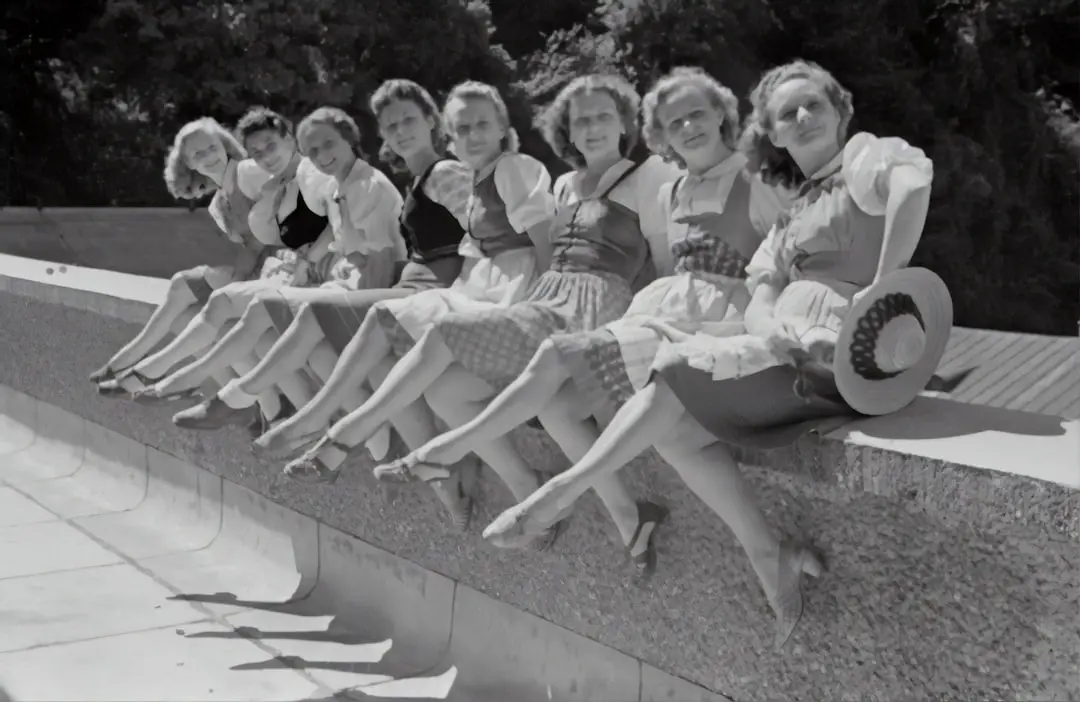
After our deep dive into the brands that defined the 80s guitar scene, it’s clear that this decade was a goldmine of innovation, style, and attitude. From Fender’s classic yet evolving Stratocasters to Ibanez’s shred-ready masterpieces, and from Jackson’s razor-sharp metal axes to Charvel’s custom shop magic, the 80s gave us guitars that still inspire players and collectors alike.
Positives of 80s Guitars
- Innovative features like locking tremolos and high-output pickups that revolutionized playability.
- Iconic designs that perfectly captured the decade’s flamboyant spirit.
- Signature models that connected players with their heroes.
- Vintage appeal that continues to grow in value and desirability.
Negatives to Consider
- Some brands had quality control inconsistencies early in the decade.
- Heavier models like Gibson’s could be less comfortable for extended playing.
- Certain features, like active electronics, were experimental and not always universally loved.
Our Confident Recommendation
If you want a guitar that combines vintage charm with modern playability, 80s guitars are a fantastic choice. Whether you’re chasing the shred tones of an Ibanez JEM or the classic rock warmth of a 1980s Gibson Les Paul, these instruments are more than just guitars — they’re pieces of rock history. Just remember to verify authenticity and condition, and you’ll have a guitar that rocks as hard today as it did back then.
Ready to find your perfect 80s axe? Check out our recommended links below to start your journey!
Recommended Links for 80s Guitar Enthusiasts
👉 Shop 80s Guitar Brands:
- Fender: Amazon | Fender Official Website
- Gibson: Amazon | Gibson Official Website
- Ibanez: Amazon | Ibanez Official Website
- Jackson: Amazon | Jackson Official Website
- Charvel: Amazon | Charvel Official Website
- Kramer: Amazon | Kramer Official Website
- Yamaha: Amazon | Yamaha Official Website
Books for Deeper Insight:
- “The Electric Guitar: A History of an American Icon” by André Millard — Amazon
- “Guitar Stories: Volume 1” by Tony Bacon — Amazon
- “Vintage Electric Guitars: The Illustrated Encyclopedia” by Mike Doolin — Amazon
Explore Vintage 80s Guitars for Sale:
FAQ: Your Burning Questions About 80s Guitars Answered 🔥❓
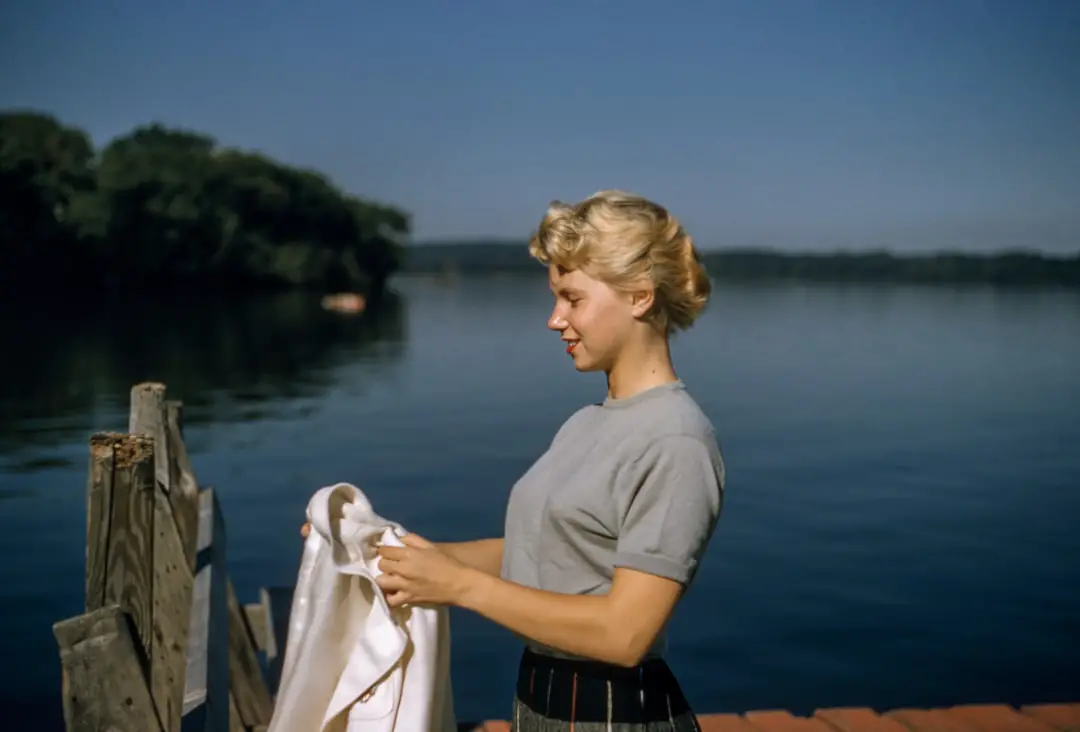
What are the most iconic guitar brands of the 80s?
The 80s guitar scene was dominated by a mix of veteran American brands and emerging Japanese innovators. Fender and Gibson remained pillars with their classic models, while Ibanez, Jackson, Charvel, and Kramer rose to fame by catering to the shred and metal crowd. Brands like ESP and B.C. Rich also gained traction for their aggressive designs and tones. This blend created a diverse landscape where tradition met innovation.
Which 80s guitar brands are still popular today?
Many 80s brands have stood the test of time. Fender and Gibson continue to be industry leaders, producing both vintage reissues and modern models. Ibanez and Jackson remain favorites among metal and shred players. Charvel and Kramer have experienced resurgences, often reissuing classic models. Yamaha and ESP also maintain strong followings for their quality and innovation.
Read more about “Which Guitars Does Taylor Swift Use? 8 Stunning Models Revealed! 🎸…”
What were the best selling guitar models of the 80s?
Some of the best sellers included:
- Fender Stratocaster and Telecaster (especially MIJ models)
- Gibson Les Paul Standard and SG
- Ibanez RG and S Series
- Jackson Randy Rhoads and Soloist models
- Charvel San Dimas and Model 1
- Kramer Baretta and Pacer
These models combined playability, style, and tone that resonated with the decade’s players.
How did 80s guitar brands influence the music of that era?
80s guitar brands shaped the sound and image of rock and metal. Their innovations like Floyd Rose tremolos and high-output pickups enabled new playing techniques such as dive bombs and shredding. Signature models connected fans with their heroes, fueling the rise of virtuoso guitarists. The bold designs matched the flamboyant aesthetics of glam and metal, making guitars central to the era’s identity.
What are some notable guitar models from the 80s that are still sought after by collectors?
Collectors highly prize:
- Ibanez JEM (Steve Vai signature)
- Jackson Randy Rhoads V
- Charvel San Dimas
- Fender MIJ Stratocasters
- Gibson Les Paul Standards from the early 80s
- Kramer Baretta models
These guitars are valued for their rarity, condition, and association with iconic players.
Which 80s guitar brands are known for their unique designs and features?
- Ibanez: Innovative “monkey grip” handles and sleek fast necks.
- Jackson: Sharp V shapes and aggressive styling.
- Charvel: Custom shop options and player-specific mods.
- Kramer: Early adopters of Floyd Rose tremolos with flashy finishes.
- ESP and B.C. Rich: Distinctive body shapes favored by metal players.
These brands pushed the envelope in both aesthetics and functionality.
What are the key characteristics of 80s electric guitars that distinguish them from other eras?
- Locking tremolo systems (Floyd Rose and variants) for extreme pitch effects.
- Thin, fast necks designed for shredding and technical playing.
- High-output pickups for aggressive, saturated tones.
- Bold, flashy finishes including neon, metallic, and graphic designs.
- 24-fret necks offering extended range for solos.
- Active electronics experimented with on some models.
These features combined to create guitars that were as much visual statements as musical tools.
Reference Links and Further Reading 📚
- List of Guitar Manufacturers — Wikipedia
- Vintage Rare 1980s Guitars for Sale — The Music Locker
- Fender Official Website
- Gibson Official Website
- Ibanez Official Website
- Jackson Guitars Official Website
- Charvel Official Website
- Kramer Guitars Official Website
- Yamaha Guitars Official Website
- ESP Guitars Official Website
For more expert insights and detailed guides, visit our Guitar Brands Showcase and Guitar Buying Guide.
